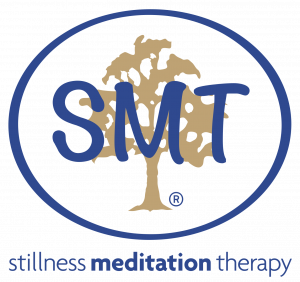Anxiety and the need for perfection: a Q&A session
Over the years I’ve covered many questions and answers personally, in my books and via the internet. When anxiety is high, there is always a quest for more reassurance, more information and more certainty.
Here’s a recent interchange between me and a special client who made a long trip to Melbourne to spend a week experiencing SMT.
Dear Pauline,
I made slow but steady progress after my course with you, but after several weeks I began to feel a bit lost as there wasn’t anybody nearby teaching SMT. I turned to Mindfulness to continue my meditation practice, and continued to make good progress, and successfully phased out my medication.
Unfortunately last year some significant life stressors led to severe anxiety again, culminating in a breakdown. It has been a horribly frightening time. Mindfulness meditation has not been helping, and so I have made a return to SMT.
I practice SMT now for 20-30 minutes twice a day. But I am feeling a bit lost with regard to whether I am doing it correctly. My mind goes off, ‘free-wheeling’, and I have fragments of dreams and wandering images. Is this right? How do I know I’m not just asleep sitting up? I don’t think I am experiencing stillness at all as my mind seems to be very busy.
Any clarity on these matters would be greatly appreciated Pauline.
Dear E
I’m really sorry to learn of your ‘downs’ but glad to know of the ‘ups’. As I would probably have explained to you before, mindfulness is not helpful for anxiety conditions because its method is focused on the mind being occupied, when the healing of anxiety is found in mental rest. So it’s great that you have returned to SMT as we taught you on your visit here.
One very important aspect of SMT is that it’s not about doing it correctly. The only ‘correct’ thing to do is not try to achieve anything. Freewheeling, dreams and images and memories are fine which means you are allowing your mind to learn that it’s not necessary to be cognitively attentive at all times. This is where mental rest begins – simply letting go, being still, letting the mind learn to rest instead of making any kind of mental effort. There may be times when you momentarily sleep (sitting up!) but unless you are extremely tired these are usually just passing moments. And although your mind seems busy, most likely if you try to revisit what you were thinking about after the stillness experience, much of it can’t be greatly recalled at all. The SMT experience is a bit like slipping into a reverie or day-dream state. But as you become more practised at this, you will capture stillness – or the experience of effortless ease which goes beyond the daydream state – for longer periods of time.
One other important thing to note in the process of emotional healing … as we approach the ‘stillness’ experience it’s really important that we are releasing all physical tension. With the body letting go, the mind learns to follow. As we come out of the stillness experience we usually feel quite calm and more relaxed. So it’s important that we begin to let that calmness flow into everyday tasks in the whole of life. If we relax and then spring back into tension, we are almost undoing any healing that may have taken place.
My book Living Calm in a Busy World is an attempt to emphasise the importance of this ‘new’ way of living. An analogy which may be helpful to you is that of the similarity of clenching your fist tightly as opposed to allowing your hand to freely relax. The clenched fist is like the overworked mind … the freely relaxed hand is like the mind at ease.
The third really important factor in this process is persistence with practice, regardless of how or what it feels like or whether or not satisfactory progress seems to be happening. Repetition and persistence in the practice will slowly but surely move you beyond distress. Please trust it! Remember too, that any kind of ‘stress’ can have the effect of raising anxiety, even in very small ways. But ‘stillness’ is like the corrective antidote to that reaction and, with time, will become your usual and natural response to all the ups and downs of life.
Dear Pauline,
Thank you so much for your kind and detailed response to my email. That is hugely helpful. I think I have been ‘trying’ too hard and not allowing myself to just be. I don’t think I am even remotely close to experiencing stillness/effortless ease, and even physical relaxation is difficult.
Is 20/30 minutes twice a day enough? Should I be doing longer sessions? Also, there are some times where I am so wired/agitated it is really hard sitting there and I feel like getting up and distracting myself. Should I just persist in these instances or give up?!
Dear E
20 to 30 minutes twice daily is excellent. When you feel too agitated to persist it is fine to abandon it for the time being … but I suggest you come back to it fairly soon. Shorter sessions several times a day may suit you better at this stage – so you make gradual steps to change without feeling any kind of pressure to ‘succeed’.
Dear Pauline
I’m sorry to bother you again so soon. I just wondered if you could tell me if you have many clients who have difficulty with morning anxiety. By that I mean waking with deep apprehension and dread. I find this such a discouraging way to start the day and it generally persists throughout the day. Does SMT take care of this? I cannot remember the last day I woke in peace.
Dear E
Morning anxiety is very common. I can’t give you an instant solution but ‘stillness’ certainly takes care of it in time. I think the way to look at it is that this is one of a range of physical and emotional anxiety symptoms.
Try to worry less about this reaction as worry just makes things worse. As with all things in life, the more attention we give to them the more they will persist. I think this is a good example of the use of positive thinking. Let’s suppose you go to bed each night dreading that feeling being there in the morning. It’s a sort of self-fulfilling prophecy isn’t it? Better still – imagine that you could go to bed each night thinking of some peaceful and pleasant outcome instead.
Remember that the mind takes in and responds to the information we give it. If we program it for dread, then it’s highly likely that dread will occur. As well as your SMT practice, I suggest you cultivate some lovely things to do in the evening:
• Make social life peaceful, with those who bring joy to your life
• Stay away from the phone and computer
• Cook with care and eat slowly
• No TV unless it’s something life-giving
• Play your favourite music or read a good book
• Maximise slow down time, warm bath, fragrance and self care
• Ensure that self talk is only about good things
Life can’t be always perfect – so no need to try for that. Cultivate calm, be true to yourself and let all the tensions go … trust the natural simplicity of SMT as little by little, you let your body change your mind.
Dear Pauline,
Lovely to hear from you – things are starting to feel a little brighter, the pattern of my day is improving, I’m still waking horribly, but the symptoms are fading as the day goes on and I’m having some much more pleasant evenings. So, definite signs of improvement! I am managing to adopt a bit more of an accepting attitude by telling myself that I am a work in progress and recovery will come in its own time. This is easier said than done some days, but it eases the way a little. I continue to ‘sit’ twice a day and perhaps my nervous system is now beginning to get the message that there’s nothing (real) to fear.
I am delighted that you are going to use our correspondence in your blog. I hope it can help others out there who are treading the same path.
Best wishes,
E

